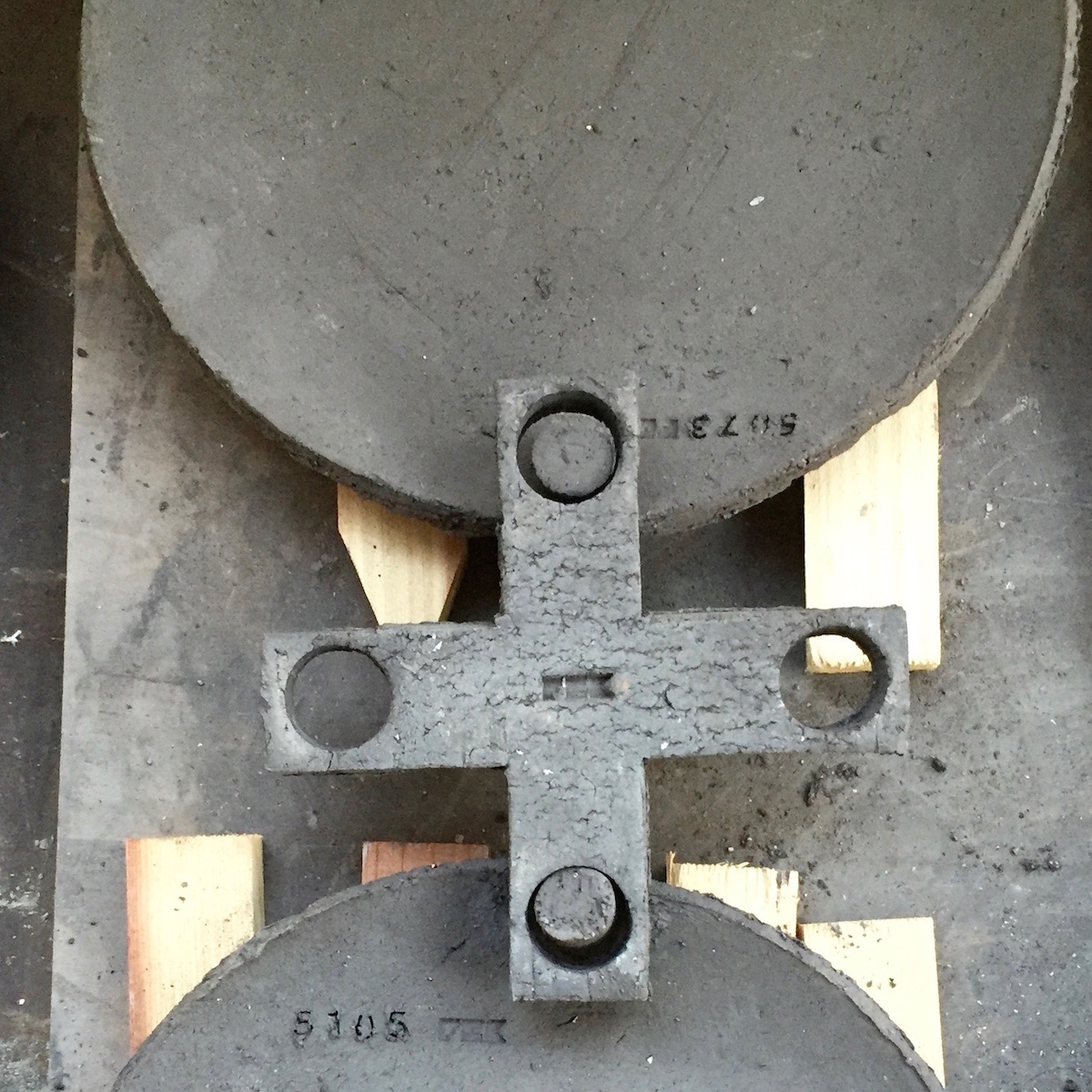LOS ANGELES — Eat The River, by French artist Frédérick Gautier, was a two-month long site-specific intervention into the LA River’s history and landscape. Gautier’s residency began at Please Do Not Enter in July and the exhibition had its opening September 21.
Starting July 20, Gautier interacted with the site and created works in a temporary studio space in Frogtown, where he produced a series of three-dimensional ceramic objects derived from the traces, cracks, holes, and imprints cast and drawn from the remnants of the site’s physical history.
Gautier is fascinated by Los Angeles as a city of blurred boundaries where industrial zones bleed into natural habitats and freeways isolate neighborhoods. The LA River epitomizes this divisive reality and Gautier intends to excavate it as a symbolic site of industrial intervention. In 1920, the cement LA River bed was built to control perennial flooding, and the surrounding areas were redefined as a result as urban wastelands full of warehouses and dumps. It soon became an iconic setting for action movies and murky underworld auteur films. The landscape is changing, however, and Los Angeles has begun the reclamation and rediscovery of its 48-mile stretch of river: an axis that delineates the entirety of the city from north to south.
Gautier says, “My plan is to set out in search of visible forms and footprints, to inventory some one hundred cracks, joints, and holes in the concrete riverbed. Throughout my expedition downriver, beneath the bridges that span the flow of water and time, and one hundred years of civil engineering and architecture, I will be locating and highlighting one hundred discrete time markers. I will use this material for my fantasized reading of the watershed, grounded in true stories of day-to-day life on and around the river.
“This is a quintessentially American cityscape, cast in countless Hollywood movies with their breakneck chase scenes. I love the concrete that ages so ungracefully, and I want to take samples of graphic relics from this massive movie set and turn them into a collection of utilitarian objects. I love the unreality of this concrete trench, this weirdly brutal, graphic slash across the landscape, overlaid upon the natural riverbed, creating surprising forms all along the 48-mile course.
“I intend to delve into this site, this re-centered core of Los Angeles, and take from it what I need to make a situational assessment and a project statement, my personal coming-to-grips with this hybrid cityscape.”
At the intersection of art and design, Gautier’s ceramics explore the themes of necessity, utility, shape and form. Through his art, he establishes a dialectic between the constructed and the organic, the made and the found, and the fleeting and the permanent. By using a repertoire of simply repeated shapes, the artist is influenced by Bauhaus, Le Corbusier, and Mallet-Stevens. Gautier creates his ceramics in his Parisian workshop where he experiments with alternative material uses and applications. Embracing a somewhat “crude” modern aesthetic, Gautier focuses his work on the material itself rather than on its ornamentation. He favors the rawness of concrete for its reliefs and textures.
From 2010 to 2014, Gautier studied at the renowned École Nationale du Paysage de Versailles, developing his interest in landscape and expertise as a landscape architect. In 2013, Gautier’s controversial performance work Royal Splash was presented in the Versailles Grand Canal and filmed by Agnes B and French Director Laurent Perreau.
Text edited) and images courtesy of the gallery.
Do you love or loathe these works of contemporary ceramic art? Let us know in the comments.










Add your valued opinion to this post.